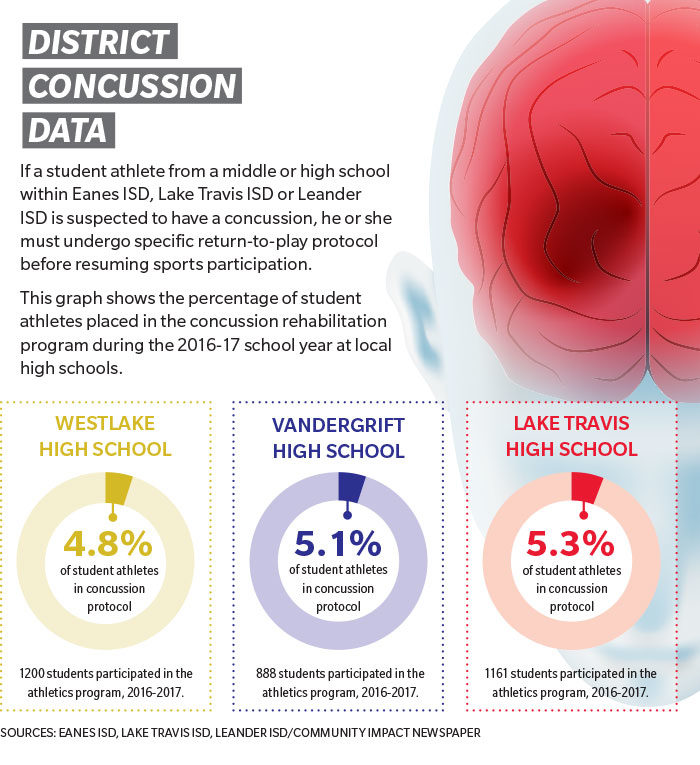As the national conversation about concussions in sports has gone mainstream, area school districts have implemented policies aimed at ensuring student athletes recover fully from their concussions.
A concussion occurs when the brain is injured after being abruptly moved within the skull, according to the Centers for Disease Control and Prevention website. The website states concussions can cause nausea, light-sensitivity and dizziness, among other symptoms.
“If an athlete returns to play before the brain is healed, it could have some permanent effects, especially if there is a second or third concussion,” said Dr. Joseph Feste, the medical director at Natural Bio Health, a Lakeway clinic providing concussion testing.
Concussion prevention
Hank Carter, Lake Travis ISD’s athletic director and head football coach for Lake Travis High School, said the district uses up-to-date equipment to minimize the risk of concussion in student athletes. For example, he said the football team does not use helmets more than five years old.
“Technology has gotten better,” he said. “What we are always looking to do is to find ways to make sure we’re keeping our kids safe”
Carter said the district aims to reduce concussion risk by building neck strength in student athletes through certain exercises, which prevents whiplash. Steps are taken to make sports practice safer, from protective headgear in rugby and soccer to adjusting tackling methods to prevent hits to the head in football, he said.
Additionally, before a student athlete begins playing school sports, all three area school districts administer computerized ImPACT testing to establish a baseline reading on the individual’s cognitive skills and reaction time, said Carter, Leander ISD co-athletic trainer Wayne Lauritzen and Eanes ISD spokesperson Claudia McWhorter. That way, if a concussion is suspected, another test can be done and compared to the baseline reading, Lauritzen and the district representatives said.
Return-to-play protocol
In 2011 the Texas Legislature passed a bill called Natasha’s law, requiring public schools to enact protocol for students recovering from suspected concussions.
EISD, LISD and LTISD have established return-to-play protocol, a process including concussion testing, symptom monitoring and the gradual introduction of activity in collaboration with a school athletic trainer, according to McWhorter, LISD and LTISD documents.
“If we evaluate them, we think they have a concussion, then we start the process,” Lauritzen said. “The bottom line is, you’re never going to prevent [concussions], so what it becomes more is the emphasis is really on [the] recognition of [a] concussion and then proper management—how you treat them.”
Additional testing and treatment
Some local businesses offer student athletes additional resources to manage their concussions.
Natural Bio Health offers WAVi brain scans, which test the organ’s reaction time and voltage, Feste said. Once a baseline test is established, the clinic can scan the brain again after injury to determine how the brain was affected in an approximately 10-minute test.
“This is where the WAVi, I believe, plays a big role,” Feste said. “You can identify really quickly whether or not the brain has been damaged.”
Natural Bio Health offers oral supplements to reduce brain inflammation, and follow-up tests can determine when the brain is healed enough to return to sports, he said.
ATX Hyperbarics in West Lake Hills treats concussions by putting patients into chambers pressurized with oxygen. The sooner a young athlete with a concussion can enter a chamber, the sooner he or she will recover, the clinic’s medical director, Dr. Eleanor Womack, said.
“Oxygen is the number one anti-inflammatory agent available,” she said. “The area of injury can be limited, and recovery can therefore be very, very quick.”






